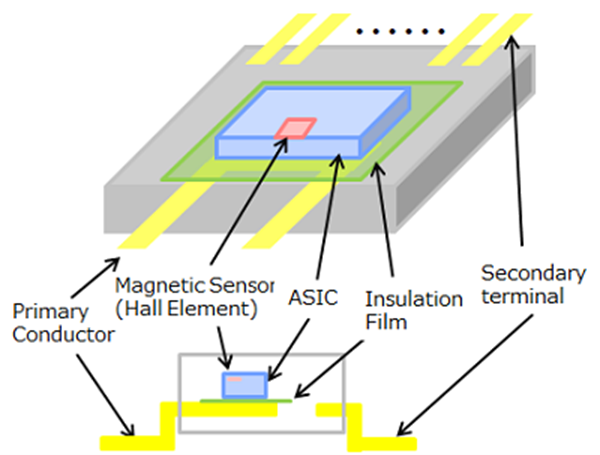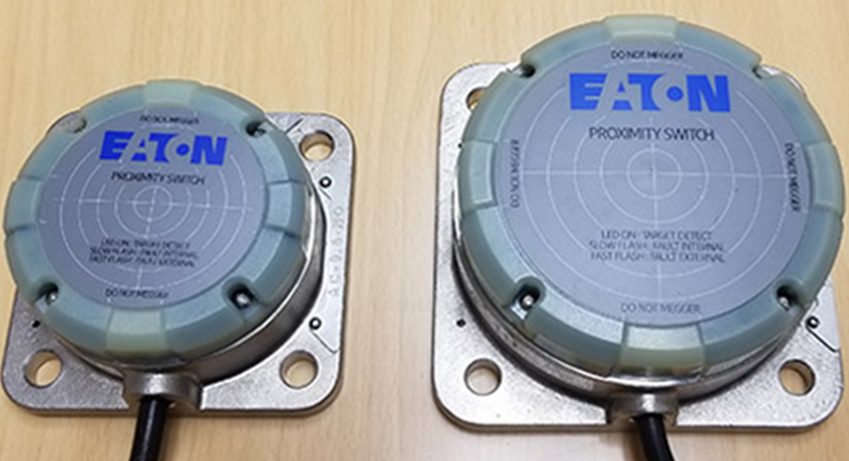
Asahi Kasei Microdevices (AKM) cares a lot about how design engineers choose to sense current, especially using magnetic sensing based upon Hall elements such as with its line of Currentier sensors, whose structure is depicted above. In explaining its technology, AKM has come up with a helpful tutorial on the fundamental types of current sensors and their distinctive characteristics. Some of the key points are highlighted in this article while the complete presentation is available on the company’s website.

Current measurement methods using integrated circuits are generally classified by three categories, namely shunt resistor+isolation amplifier/isolation ADC, and magnetic sensing using a cored current sensor or a coreless current sensor:
- Shunt resistor+isolation amplifier/isolation ADC is suitable for a design engineer who wants to accurately detect microcurrent level (less than 10A) with a large disturbance magnetic field where heat generation is not an issue.
- Fluxgate is suitable for applications which require the highest accuracy.
- General coreless current sensor is suitable for applications which require small size in small devices and for applications which require lower cost than detecting accuracy. (AKM’s coreless current sensor performs comparable to any other coreless current sensor, as well as cored current sensor(open-loop and closed-loop).
Magnetic sensors
The principle of the magnetic current sensor is that the current to be measured generates a magnetic field around the current path, and by detecting this generated magnetic field using a magnetic sensor, the amount of the current can be measured. A cored current sensor collects and detects magnetic fields around current lines with magnetic cores. There are three categories: Open-loop; Closed-loop; and Fluxgate. A common disadvantage is that the core requires more space, particularly height. Also, there can be hysteresis, causing a change in zero-current output (offset voltage) and eventually cause the measurement error when the large magnetic field is applied to the core.

The fluxgate method consists of the magnetic core and the probe coil. The probe coil is driven with the high frequency AC and is used as a sensor. Therefore, it has own advantage that offset hardly occurs in principal regardless of temperature. However, because of the probe coil, the structure is complicated and it’s expensive. In addition, there is a disadvantage that the current consumption increases because of the feedback current.

To remedy these problems, coreless current sensors were developed and, for more than a decade, have been used in applications that emphasize small size. The configuration is very simple. The Hall effect magnetic sensor detects the magnetic field created by the measured current flowing through the primary conductor, and the IC corrects and amplifies signals from magnetic sensors.

As depicted in the diagram at top of this article, AKM’s new Currentier sensors employ a different design to achieve new advantages with coreless sensing including low heat generation and high resolution, but this all comes “with a price”, notes the company. For the complete presentation, see the tutorial on current sensing at www.akm.com.



